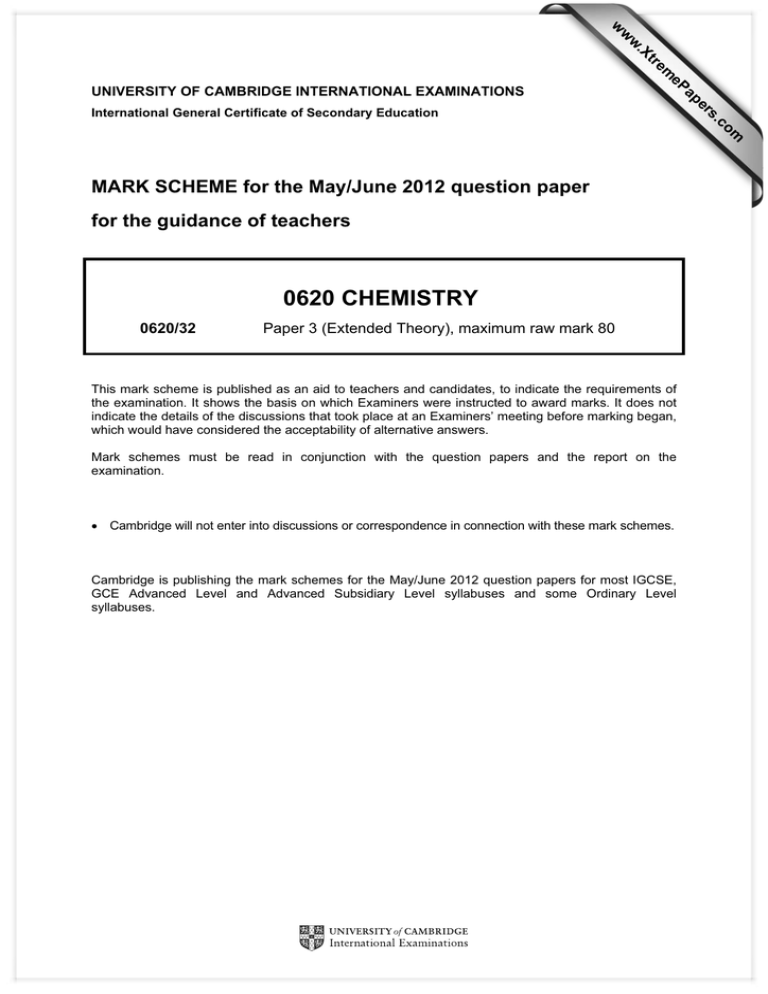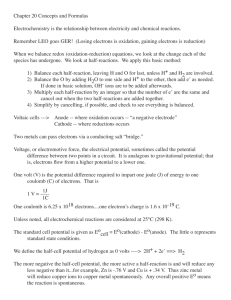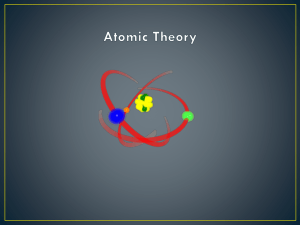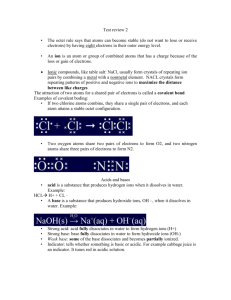0620 CHEMISTRY MARK SCHEME for the May/June 2012 question paper
advertisement

w w ap eP m e tr .X w UNIVERSITY OF CAMBRIDGE INTERNATIONAL EXAMINATIONS for the guidance of teachers 0620 CHEMISTRY 0620/32 Paper 3 (Extended Theory), maximum raw mark 80 This mark scheme is published as an aid to teachers and candidates, to indicate the requirements of the examination. It shows the basis on which Examiners were instructed to award marks. It does not indicate the details of the discussions that took place at an Examiners’ meeting before marking began, which would have considered the acceptability of alternative answers. Mark schemes must be read in conjunction with the question papers and the report on the examination. • Cambridge will not enter into discussions or correspondence in connection with these mark schemes. Cambridge is publishing the mark schemes for the May/June 2012 question papers for most IGCSE, GCE Advanced Level and Advanced Subsidiary Level syllabuses and some Ordinary Level syllabuses. om .c MARK SCHEME for the May/June 2012 question paper s er International General Certificate of Secondary Education Page 2 1 Mark Scheme: Teachers’ version IGCSE – May/June 2012 Syllabus 0620 Paper 32 (a) neon has full outer shell / energy level / valency shell / octet / 8 (electrons) in outer shell / neon does not need to lose or gain electrons; [1] fluorine atoms have 7 electrons / needs 1 to fill / has incomplete shell / forms bonds with other fluorine atoms / fluorine (atoms) form covalent bonds / shares electrons; [1] (b) atomic number / proton number / number of protons (in one atom); [1] (c) weak intermolecular (or between molecules) forces / Van der Waals forces between molecules / low amount of energy required to break bonds between molecules; [1] strong bonds don’t break / covalent bonds don’t break / (unnamed) bonds within molecules / between atoms don’t break; [1] (d) 1 non-bonding pair on each nitrogen atom; 6 electrons between nitrogen atoms; 2 [1] [1] (a) weak forces between layers or between (hexagonal) rings / weak bonds between layers or between (hexagonal) rings / Van der Waals forces between layers or between (hexagonal) rings; [1] (layers/rings) slip/slide (over each other) / move over each other [1] (b) strong bonds (between atoms) / covalent bonds (between atoms); [1] all bonds are covalent/strong / each atom covalently bonded / carbon (atoms) is bonded to four others / bonds are directional / (atoms are arranged) tetrahedrally; [1] accept: carbon has four bonds (c) graphite has delocalised / mobile / free electrons; [1] diamond (outer shell) electrons used / fixed / localised in bonding / no delocalised electrons / no mobile electrons / no free electrons; [1] 3 (a) flexible / easily form different shapes / easily moulded / bends (without cracking); [1] non-biodegradable / unreactive / don’t corrode / prevent corrosion / prevent oxidation (of the conducting metal) / water resistant / waterproof; [1] (b) improve appearance / decorative / makes appearance shiny; [1] prevent corrosion / rusting / protect steel / chromium will not corrode / chromium is not oxidised / chromium protected by an oxide layer; [1] (c) low density / light / protected by oxide layer / no need to paint / resists corrosion / (high) strength / strong;; any two [2] note: high strength to weight ratio = 2 (d) high mpt / withstands high temperature / good conductor (of heat) / heats up quickly / malleable / ductile / resists corrosion / good appearance / unreactive (or example of lack of reactivity e.g. does not react with food or water or acid or air);; any two [1] © University of Cambridge International Examinations 2012 Page 3 Mark Scheme: Teachers’ version IGCSE – May/June 2012 Syllabus 0620 Paper 32 (e) (lattice) positive ions / cations / metal ions and sea of electrons / delocalised or free or mobile or moving electrons; [1] attraction between positive ions and electrons; [1] 4 (a) (i) oxygen; carbon dioxide / fluorine / carbon monoxide; [1] [1] (ii) decrease mpt (of alumina/Al2O3) / lower (operating) temperature (from 1900/2100 (°C) to 800/1000 (°C) / reduce energy (accept heat or electrical) requirement; [1] improve conductivity / dissolves the Al2O3 / acts as solvent; (allow: makes aluminium oxide conduct / to conduct electricity / making ions free to move) [1] (iii) Al2O3 (accept alumina) reacts / dissolves / forms a salt and water / is neutralised; (Fe2O3 removed by) filtration / centrifugation / decantation; [1] [1] (b) (i) electrolysis / electrolyte / electrodes / anode / cathode / electricity / cell; [1] chlorine formed at anode (positive electrode); (note: can be awarded from a correct or incorrect equation with Cl2 as the only substance on the right as long as anode is mentioned.) [1] hydrogen formed at cathode (negative electrode); (note: can be awarded from a correct or incorrect equation with H2 as the only substance on the right as long as cathode is mentioned.) [1] one correct half equation either 2Cl – → Cl2 + 2e or 2H+ + 2e → H2 [1] solution remaining contains Na+ and OH– / sodium and hydroxide ions / NaOH / sodium hydroxide left behind/remains in solution; [1] note: if a mercury cathode is specified electrolysis / electrolyte / electrodes / anode / cathode / electricity / cell; [1] chlorine formed at anode (positive electrode); (note: can be awarded from a correct or incorrect equation with Cl2 as the only substance on the right as long as anode is mentioned.) [1] sodium formed at cathode; (note: can be awarded from a correct or incorrect equation with Na as the only substance on the right as long as cathode is mentioned.) [1] one correct half equation at anode i.e. 2Cl – → Cl2 + 2e or at cathode Na+ + e → Na (accept: equivalent with NaHg amalgam) [1] NaOH/sodium hydroxide is formed by sodium/sodium mercury amalgam reacting with or when added to water; [1] note: award the fourth and fifth mark if correct equation given for reaction between sodium or sodium mercury amalgam reacting with water i.e. 2Na(Hg) + 2H2O → 2NaOH + H2 + (2Hg) (ii) H2 / H / hydrogen and making ammonia / making margarine / hardening fats / fuel / energy source / cryogenics / welding; [1] Cl2 / Cl / chlorine and (making) bleach / water treatment / kill bacteria (in water) / water purification / swimming pools / making solvents / making PVC / making weed killer / making disinfectants / making hydrochloric acid / HCl / making herbicides / pesticides / insecticides; [1] © University of Cambridge International Examinations 2012 Page 4 5 Mark Scheme: Teachers’ version IGCSE – May/June 2012 Syllabus 0620 Paper 32 (a) (i) correct -O- linkage; correct unit and continuation -O-- (minimum); [1] [1] (ii) any name or correct formula of a (strong) acid / H+; [1] (iii) contain carbon hydrogen and oxygen /C, H and O; [1] (b) (i) glucose → ethanol + carbon dioxide (ii) yeast is catalyst / provides enzymes / speeds up reaction / too slow without yeast; yeast cells grow / multiply / reproduce / undergo budding / breed; [1] [1] [1] (iii) heat or high temperature would kill yeast (cells) / heat or high temperature denatures enzymes; [1] not: enzyme killed / denatures yeast reduces rate of reaction / slows reaction / (yeast or enzyme) no longer catalyses / no catalyst / stops reaction / no more product; [1] (c) (i) would produce carbon dioxide or carboxylic or organic acids (if oxygen is present) / to prevent aerobic respiration / so products are not oxidised / anaerobic bacteria can’t live with oxygen; [1] (ii) fossil fuels have a reduced need / conserved / no need to import / will last longer / cracking hydrocarbons to make methane no longer required; (methane) is renewable / carbon neutral; reduce pollution of water or sea / prevents visual pollution / prevents need for waste disposal or accumulation (accept: any methods of waste disposal) / so that waste is recycled; any two [2] 6 (a) (i) A C D B [1] (ii) speed (or rate) increases as concentration increases / time decreases as concentration increases; [1] rate or speed or time depends on (concentration) of H+ or hydrogen ions; [1] B is slow because propanoic acid is weak or doesn’t dissociate or weakly ionises; or B is slow because HCl and H2SO4 are stronger or ionise or dissociate more than propanoic; [1] D slower than C because C is more concentrated than D / ORA; [1] A is fast because H+ concentration high (note: this would also score second mark if not already awarded) / H2SO4 is diprotic or dibasic or 2H+; [1] time is inversely proportional to rate / owtte / ORA; [1] max [5] © University of Cambridge International Examinations 2012 Page 5 Mark Scheme: Teachers’ version IGCSE – May/June 2012 Syllabus 0620 Paper 32 (b) change 1: increase temperature / heat (the mixture); [1] particles/molecules/ions have more energy or move faster; [1] more (successful) collisions / more particles with Ea; [1] change 2: increase surface area / decrease particle size / use powdered (magnesium) / use smaller pieces / crush the magnesium; [1] more collisions / more particles exposed to reaction; [1] or catalyst; [1] more (successful) collisions; [1] lowers Ea; [1] max [5] 7 (a) (i) CH2/H2C [1] (ii) same ratio of C:H (atoms) / all cancel to CH2 / because general formula is CnH2n / same ratio of atoms or elements (in the compound) / C:H ratio is 1:2; [1] (b) (i) propanoic / propionic (acid); ethanoic / acetic (acid); (ii) formula of ethene / but-2-ene / any symmetrical alkene; (c) (i) CH3CH(Br)CH2Br [1] [1] [1] [1] (ii) CH3CH(OH)CH3 / CH3CH2CH2OH / C3H7OH [1] correct unit; accept: more than one repeat unit continuation bonds at both ends; [1] (d) (e) if C5H10 is given award 3 marks;;; if C10H20 is given award 2 marks;; if 1:7.5:5 / 2:15:10 is given award 2 marks;; in all other cases a mark can be awarded for moles of O2 (= 2.4/32 =) 0.075 AND moles of CO2 (= 2.2/44 =) 0.05; 2C5H10 + 15O2 → 10CO2 + 10H2O accept: multiples including fractions allow: ecf for correct equation from any incorrect alkene © University of Cambridge International Examinations 2012 [1] [3] [1] Page 6 8 Mark Scheme: Teachers’ version IGCSE – May/June 2012 Syllabus 0620 Paper 32 (a) proton donor; [1] (b) equal concentrations of both (solutions); add Universal indicator / determine pH / pH paper; ethylamine has lower pH / ORA; or equal concentration of both (solutions); measure conductivity of aqueous ethylamine and sodium hydroxide; ethylamine will have lower conductivity / sodium hydroxide will have higher conductivity; [1] [1] [1] [1] [1] [1] (c) add strong(er) base / NaOH / KOH; warm / heat; [1] [1] (d) (ethylamine forms) hydroxide ions / OH– (in water); [1] hydroxide ions / OH– reacts with iron(III) ions / Fe3+; or iron(III) hydroxide / Fe(OH)3 (forms as a brown precipitate); [1] note: balanced or unbalanced ionic equation i.e. Fe3+ + (3)OH– → Fe(OH)3 scores both marks © University of Cambridge International Examinations 2012







